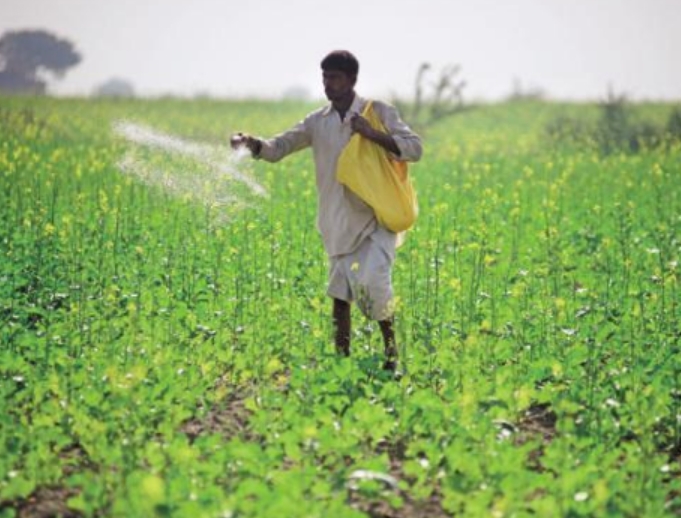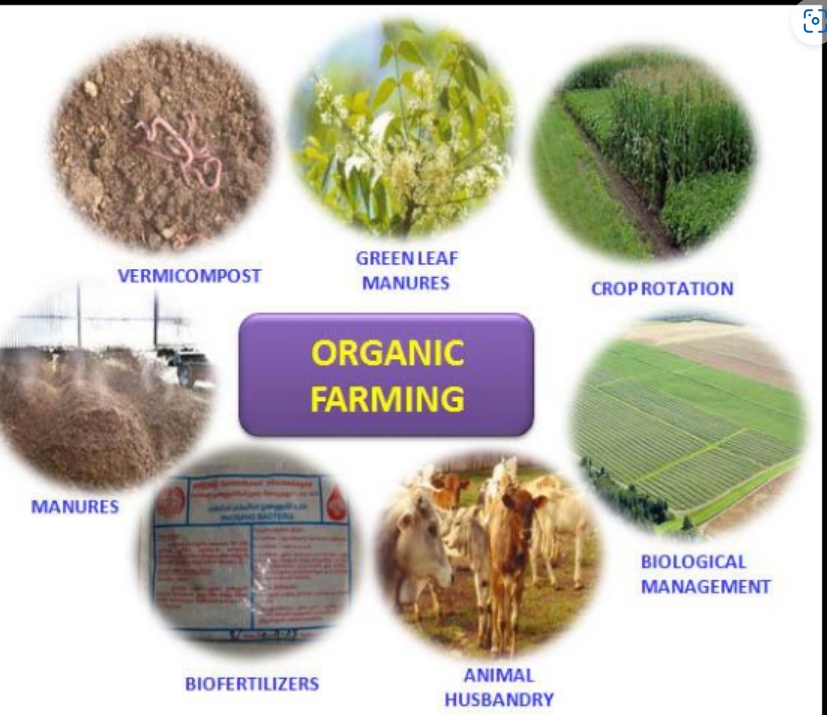
CBSE Class 9 Science Notes Chapter 15: As we discover in CBSE Class 9 Science Notes Chapter 15 Improvement in Food Resources Notes, food is a necessity for all living things. Proteins, carbs, and other vital nutrients are found in food and are necessary for healthy bodily development and growth. The sources from which the raw materials are sourced are also included in this chapter. This chapter provides us with a wealth of information about the diverse resources available for food and sustainable agriculture, making it an intriguing subject.
In Improvement in Food Resources Class 9 Notes , students learn about various aspects of food production, its sources, and how agriculture can be made more sustainable to meet the growing food demand. This chapter is an essential part of the curriculum, offering insights into agricultural practices, crop improvement techniques, and the importance of resource management in food production.CBSE Class 9 Science Notes Chapter 15 Overview
Food is a necessary source of energy for all living things to thrive and survive. Through agriculture and animal husbandry, we get sustenance from both plants and animals. It is imperative to enhance food resources to fulfill the population's continuously rising demands. This involves enhancing the quality as well as the quantity of food supplies, which translates to higher yields and more diverse crop varieties. To accomplish this without endangering the environment and the delicate balance of nature, we require sustainable techniques in animal husbandry and agriculture. Integrated farming, intercropping, and mixed farming are a few instances of sustainable and rational management techniques.CBSE Class 9 Science Notes Chapter 15 PDF
Here we have provided improvement in food resources class 9 notes for the ease of students so that they can just download the pdf and use it easily without the internet. These CBSE Class 9 Science Notes Chapter 15 will help students understand the chapter better.CBSE Class 9 Science Notes Chapter 15 PDF
CBSE Class 9 Science Notes Chapter 15
Food
All of the fundamental needs for healthy growth, development, and well-being are met by food. All nutrients, including proteins, lipids, carbs, vitamins, and minerals, are found in food.Agriculture
Agriculture is the science or art of farming, which includes tilling the land, cultivating crops, and raising livestock to produce meat, wool, and other goods.Sources of Carbohydrates
Carbohydrates can be found in different forms, such as sugars, fresh fruits, starch, vegetables, cereals, corn, potatoes, fibers, bread, pastries, milk, and milk products.Sources of Fats
Many foods, including butter, cheese, cream, and oilseeds like soybeans and groundnuts, naturally contain fats.Sources of Vitamins and Minerals
The primary food sources of vitamins and minerals are fruits and vegetables. Fish and pork can also provide some of the vitamins.Sources of Protein
The most popular foods that are higher in protein include cottage cheese, Greek yogurt, milk, broccoli, quinoa, soybeans, shellfish, almonds, poultry, eggs, and oats.Fodder Crops
Fodder crops like berseem, oats, or sudangrass are raised as food for the livestock.Kharif Crops
Kharif crops are those that are cultivated from June to October, during the monsoon season. Kharif crops include black gram, cotton, green gram, soybean, maize, paddy, and pigeon pea.Rabi Crops
Rabi crops are those that are grown in the winter, from October to March. Rabi crops include wheat, gram, peas, mustard, and linseed.Crop Variety Improvement
Crop strains or varieties can be chosen through breeding based on several beneficial traits, including high yields, resistance to disease, and sensitivity to fertilizers. We refer to this as crop variety enhancement.Hybridization
Hybridization refers to crossing between genetically dissimilar plants.Intervarietal Hybridisation
It is a cross between the two same species but with different varieties.Interspecific Hybridisation
It is a cross between two different species but the same genera.Intergeneric Hybridisation
It is a cross between the two intergeneric hybridizations belonging to different genera.Genetically Modified Crops
Genetically modified crops are created when a desired gene is inserted into the genome of a crop. Golden rice, Bt cotton, Bt brinjal, and other crops are examples of genetically modified, or GM, crops.Factors for Which a Variety of Improvements Is Done
There are several reasons why different improved varieties of crops are generated. The reasons include the following.- Higher yield.
- Improved quality.
- Maturity duration.
- Wider adaptability.
- Biotic and abiotic resistance.
- Desirable agronomic characteristics.
Crop Production Improvement
Managing agricultural production is the process of cultivating and harvesting crops efficiently.Nutrient Management
Nutrients are found in soil, water, and air for plants. Plants require sixteen different nutrients to survive. Carbon and oxygen are supplied by air, hydrogen is obtained from water, and plants receive the remaining thirteen nutrients from the soil. The process of managing nutrients involves adding manures and fertilizers to the soil to provide it with the necessary nutrients.Macronutrients
Six of the thirteen basic nutrients are abundantly needed for the growth and development of plants. Together, these vital nutrients are referred to as macronutrients. The macronutrients that plants need include nitrogen (N), phosphorus (P), potassium (K), calcium (Ca), sulfur (S), and magnesium.Micronutrients
Six of the thirteen necessary nutrients are categorized as macronutrients, and the remaining seven as micronutrients. Iron (Fe), boron (B), chlorine (Cl), manganese (Mn), zinc (Zn), copper (Cu), and molybdenum (Mo) are some of these nutrients. They are also known as trace minerals since they are needed in extremely small amounts.Manure
Manure is an organic material made from the solid wastes of people and animals, as well as from sludge, sewage, domestic trash, dead plants and animals that have decomposed, and other plant wastes such as weeds, dry leaves, and twigs. It has an enormous amount of nutrients, which enhance the quality of the soil and raise the yield of nutritious crops.Compost and Vermicompost
Composting is the process by which biological waste material breaks down in pits. Vermicompost is the term for compost that is made with earthworms to speed up the process.Green Manure
Some plants, like sun hemp or guar, are cultivated and then mulched by plowing them into the soil before the crop seeds are sown. As a result, these green plants produce green manure, which improves the nutrient content of the soil.Fertilizers
 Commercially produced plant nutrients that are needed in small amounts are called fertilizers. This fertilizer comes in several brands on the market. The most used type of fertilizer is NPK fertilizer, which supplies potassium, phosphorus, and nitrogen.
Commercially produced plant nutrients that are needed in small amounts are called fertilizers. This fertilizer comes in several brands on the market. The most used type of fertilizer is NPK fertilizer, which supplies potassium, phosphorus, and nitrogen.
Organic Farming
 Organic farming involves using as much organic manure as possible in place of as little or no chemical fertilizer. For the highest, chemical-free yield, every resource is utilized to its fullest potential.
Organic farming involves using as much organic manure as possible in place of as little or no chemical fertilizer. For the highest, chemical-free yield, every resource is utilized to its fullest potential.
Irrigation
Applying artificial water to crops to meet their water needs is known as irrigation. A variety of irrigation techniques are used to increase crop productivity. This procedure aids in making sure the crops receive water at the appropriate times. i.e., during their growing season, which contributes to raising crop yield expectations. Watersheds, canals, wells, river lift systems, tanks, and rainwater collection all aid in irrigation.Cropping Pattern
The percentage of area used for different crops is referred to as the cropping pattern. There are three categories of cropping patterns: Intercropping is a cropping practice where two or more crops are grown in parallel on the same plot of land while following a predetermined row pattern. The productivity of the crops is increased by using this kind of cropping arrangement. Small farmers who are dependent on rainfall for increased production, therefore, follow it. Crop rotation is a cropping practice used to grow different crops in a prearranged succession on the same plot of land. The duration of the crops—one, two, and three years—is taken into consideration when choosing them. A cropping strategy known as "mixed cropping" involves growing two or more crops concurrently on the same plot of land. Farmers most frequently utilize this strategy because it lowers the possibility of a crop failing due to insufficient rainfall or unfavorable weather.Crop Protection Management
Field crops need to be safeguarded against the numerous weeds, insects, pests, and illnesses that infest them.Weeds
Weeds are unwanted plants in the cultivated field consuming all the soil nutrients, finally reducing the crop yield.Protection Methods Against Weeds
To protect the crop against weeds, the following methods are employed.- Preparing a good seedbed.
- Mechanical removal of weeds.
- Plant the seeds in a timely fashion.
Effects of Insects and Pests on Crops
Insect pests attack the plants in the following ways:- They cut the root, stem, and leaves of the plants
- They suck the cell sap from various parts of the plant.
- They bore into stems and fruits, resulting in a reduction in yields.
Pesticides and Insecticides
Chemicals called pesticides and insecticides are used to eradicate pests and other insects that seriously harm both recently harvested and stored crops. These substances are poisonous by nature.Fungi and Viruses
Disease-causing microorganisms that impact plants and recently harvested crops are fungi and viruses. These infections are devastating because they wipe out enormous agricultural enterprises. Tobacco mosaic virus, cauliflower mosaic virus, cucumber mosaic virus, and other viruses are examples of plant viruses. Fungi that cause disease include powdery mildew, stem rust, and leaf rust.Herbicides and Fungicides
They are highly toxic chemicals that are used to kill fungi and unwanted vegetation.Storage Losses
The freshly harvested food grains are kept in silos or other large storage spaces after harvest. However, the food grains are damaged because of pest attacks or flooding. We refer to this as storage loss.Factors Affecting Storage Loss
It is the harm done to the system after harvest. Abiotic and biotic variables are among those influencing the storage loss. A handful of them are mentioned below: Biologic factors are storage losses brought on by living things including bacteria, fungi, mites, insects, and rodents. Abiotic factors of storage loss include losses brought on by non-living things, such as moisture content and storage location temperature.Prevention and Control Measures for Storage Loss
Storage loss can be prevented by following certain protocols like- Strict cleaning of the produce before storage.
- Fumigation using chemicals that can kill pests.
- Proper drying of the product first in sunlight and then in the shade.
Animal Husbandry
Animal husbandry is the farming and maintenance of animals for commercial purposes. Animals are raised for milk, meat, and eggs.Cattle
Almost all farmers are cattle owners. Cattle are raised in India for milk and used as draught labor for agricultural tasks. The two primary species of animals that are raised are Bos indicus (cow) and Bos bubalis (buffalo). Exotic cow breeds like Brown Swiss and Jersey are raised for long lactation periods. Indian breeds raised for disease resistance and drought work include Red Sindhi and Sahiwal. India also raises a large number of hybrids.Poultry Farming
A type of animal husbandry known as poultry farming is the raising of domestic poultry to produce eggs and chicken meat. Aseel, Busra Chittagong, and Ghagus are a few Indian poultry varieties. American breeds include the Rhode Island Red, Plymouth Rock Wyandotte, and New Hampshire. Other examples include:- English breeds are Sussex, Cornish, red caps, etc.
- Mediterranean Classes such as leghorns’ white leghorns, Minorca, are more commonly reared.
- Layers are the egg-laying birds, and broilers are reared for meat.
Fishery
Fishing is the process of obtaining fish for human use. Fish is a staple food for those who live near the seaside and is an excellent source of protein. Fish can be found in freshwater, saltwater, and even estuaries. Aquaculture is the method of capturing fish. The various categories of fishing include:- Marine Fisheries — Marine fishery deals with fishing in the oceans and seas. Apart from fish, it also deals with other seafood, such as prawns, lobsters, and crabs.
- Inland Fisheries — Inland fishery deals with fishing in rivers, lakes, and tanks. Rohu, Catla, Mrigal, Grass carp, etc., are very popular varieties of fish reared in freshwater.
Beekeeping
Apiculture, or beekeeping, is the raising of bees to produce honey and wax. This is now a significant agro-based business that pays well financially. Apis mellifera, Apis Adamson, and Apis cerena indica, popularly known as the Indian bee, are among the exotic kinds raised in India. Native to the area is also the Apis dorsata, or rock bee.Benefits of CBSE Class 9 Science Notes Chapter 15
It is advised that students periodically practice and review science. The team has produced thorough notes to guarantee that students understand each question's solutions. Here are a few benefits that students should go over from CBSE Class 9 Science Notes Chapter 15:- This chapter goes into great detail on every subject.
- The range of topics helps students evaluate their strengths and weaknesses in terms of preparation.
- Before exams, students can review the extensive notes that are provided.
CBSE Class 9 Science Notes Chapter 15 FAQs
What is the summary of Chapter 15 Class 9 science?
In Chapter 15 - 'Improvement in Food Resources,' Class 9 Science embarks on a journey exploring advancements in agricultural practices. This chapter delves into sustainable farming techniques, modern technologies, and the significance of crop variety and management.
What is the importance of food resources Class 9?
Food is required to perform several functions. It is required for growth, development and body repair. It also protects the body from diseases. Food supplies proteins, carbohydrates, fats, vitamins, minerals and water to our body.
Why do we need improvement in food?
To increase the nutritional value and consistency of the food.
Talk to a counsellorHave doubts? Our support team will be happy to assist you!

Free Learning Resources
PW Books
Notes (Class 10-12)
PW Study Materials
Notes (Class 6-9)
Ncert Solutions
Govt Exams
Class 6th to 12th Online Courses
Govt Job Exams Courses
UPSC Coaching
Defence Exam Coaching
Gate Exam Coaching
Other Exams
Know about Physics Wallah
Physics Wallah is an Indian edtech platform that provides accessible & comprehensive learning experiences to students from Class 6th to postgraduate level. We also provide extensive NCERT solutions, sample paper, NEET, JEE Mains, BITSAT previous year papers & more such resources to students. Physics Wallah also caters to over 3.5 million registered students and over 78 lakh+ Youtube subscribers with 4.8 rating on its app.
We Stand Out because
We provide students with intensive courses with India’s qualified & experienced faculties & mentors. PW strives to make the learning experience comprehensive and accessible for students of all sections of society. We believe in empowering every single student who couldn't dream of a good career in engineering and medical field earlier.
Our Key Focus Areas
Physics Wallah's main focus is to make the learning experience as economical as possible for all students. With our affordable courses like Lakshya, Udaan and Arjuna and many others, we have been able to provide a platform for lakhs of aspirants. From providing Chemistry, Maths, Physics formula to giving e-books of eminent authors like RD Sharma, RS Aggarwal and Lakhmir Singh, PW focuses on every single student's need for preparation.
What Makes Us Different
Physics Wallah strives to develop a comprehensive pedagogical structure for students, where they get a state-of-the-art learning experience with study material and resources. Apart from catering students preparing for JEE Mains and NEET, PW also provides study material for each state board like Uttar Pradesh, Bihar, and others
Copyright © 2025 Physicswallah Limited All rights reserved.
Get App









